In this Interview AZoM talks to Dr. Ashaki Rouff and Suah Yekeh about soil pollution and the solutions SciAps has to investigate the pollution.
Please could you both introduce yourselves and outline your roles?
SY: My name is Suah Yekeh, and I am a second-year Ph.D. student in the Department of Earth & Environmental Sciences at Rutgers University, Newark.
AR: My name is Ashaki A. Rouff, and I am an associate professor in the same university department.
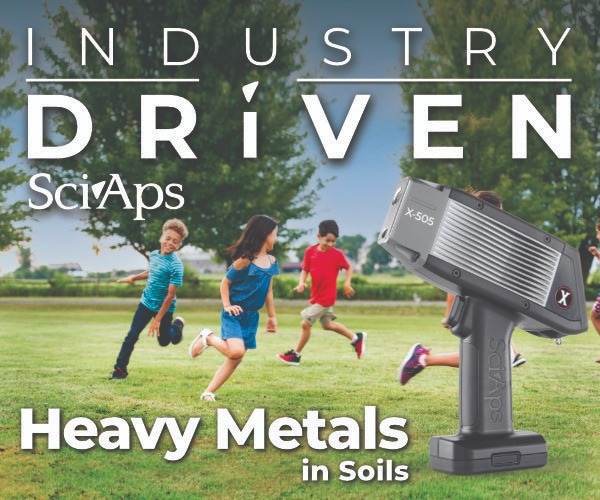
Image Credit: SciAps, Inc.
Could you please provide an overview of your recent work regarding soil pollution investigations and how these were performed?
AR: Together, we undertook investigations of the soil in seven city parks for the presence of contaminants, including heavy metals, using SciAps' X-200 XRF.
SY: Measurements were performed using an X-200 XRF instrument from SciAps following EPA Method 6200 protocols. The samples of interest were selected based on exceedance of New Jersey Department of Environmental Protection (NJDEP) standards for remediation of residential direct-contact soils.

Image Credit: SciAps, Inc.
Why were these sites chosen for investigation?
SY: Newark is home to a wide range of industrial and commercial activities linked to air pollution. Its aging infrastructure has led to previous investigations of the water systems and the discovery of lead within the water system. Soils are common repositories for airborne and waterborne metals, and contaminated soils in high-contact residential or recreational areas can impact human health.
Most Newark recreational parks are near highways, in the middle of busy traffic areas, or by seaports, so the researchers targeted these areas, where children often play for hours, evaluating them for contaminants that have settled into the soils.
Furthermore, approximately 92% of New Jersey residents reside within urbanized areas, of which the City of Newark is the most populated, so this is important research into an area that impacts a great deal of the population.
AR: We hear a lot about water pollution and particulates being injected into the atmosphere due to vehicular emissions. However, we do not hear a lot about soil, which is a huge sink where these contaminants get deposited. That is one of the reasons why we are focusing on soil; it is important but is quite often overlooked.
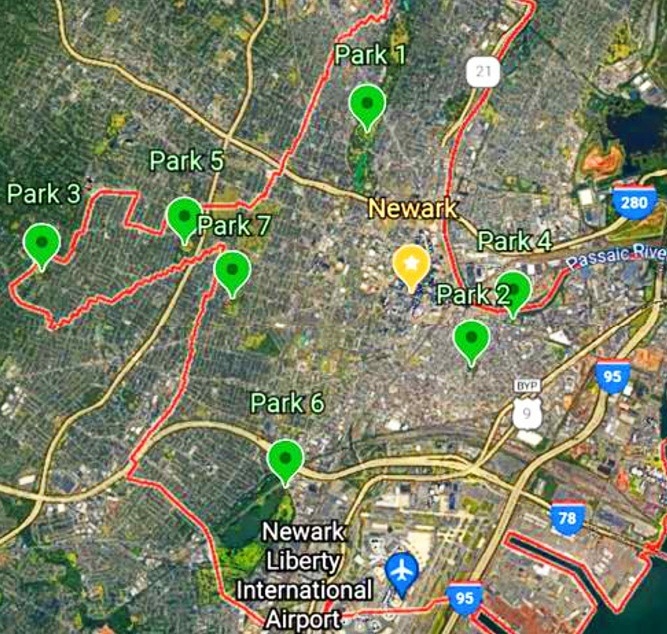
Figure 1. Location of Newark, N.J., parks evaluated in this study. Image Credit: SciAps, Inc.
Table 1. Number of samples with As, Co or Pb in exceedance of NJDEP limits. Highest and average concentrations are also reported. Source: SciAps, Inc.
| Metal |
Samples
n |
High
mg/kg |
Avg
mg/kg |
NJDEP
mg/kg |
| As |
34 |
67.17 |
30.11 |
19 |
| Co |
19 |
43.36 |
30.22 |
23 |
| Pb |
7 |
693.11 |
540.24 |
400 |
What equipment was used throughout this investigation, and what were the advantages of this equipment?
AR: SciAps' X-200 XRF analyzer was used throughout this investigation. SciAps' XRF enormously improved the efficiency and user experience of the project. I have worked with other handheld XRF instruments in the past, but I much prefer SciAps' XRF. It was much easier to use compared to a competing XRF; the software was much more user-friendly and easier to navigate.
AR: Though we had not received a great deal of support or guidance with the previous analyzer, SciAps came in and did a demo for us, which was quite informative. When we borrowed the XRF through the Academic Loaner Program, we were trained on how to use it and how to collect invaluable data. It solidified the later decision to purchase analyzers from SciAps.
AR: In summer 2022, we are planning to return to the parks with our X-505 from SciAps (which has superseded X-200) to re-sample some of the areas and take additional measurements to see if the elevated levels of arsenic, cobalt, and lead are a chronic problem, or if maybe there was some sort of perturbation that elevated those levels.
We want to make sure that we can replicate the measurements before we go on to the next steps. We will also use a Z-903 LIBS (laser) analyzer from SciAps that can measure any element from H to U, and will also look for carbon.
AR: We are excited to use the LIBS in the future because we want to see what is going on with carbon in the soil. We want to understand how the metal contents and the carbon content correlate. We already know from our speciation analyses that we do have metals bound to a lot of organic material, and so I think it will be interesting and informative to also quantify carbon in the soils and see what the correlations look like.
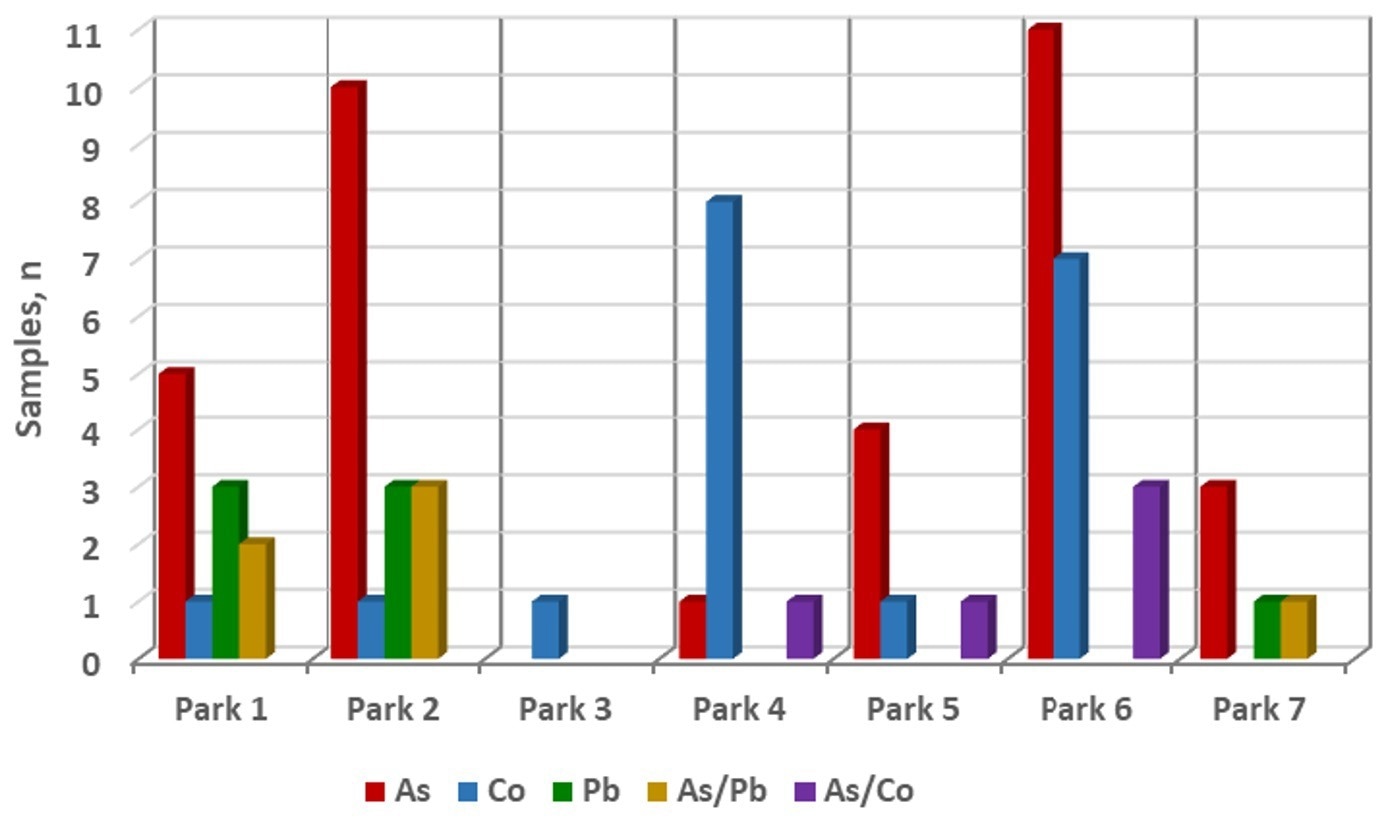
Figure 2. Number of samples with As, Co, or Pb in exceedance of NJDEP limits for each of the seven parks. The number of samples with both As/Pb or As/Co are also reported. No Pb/Co samples were observed. Image Credit: SciAps, Inc.
What were the most significant results of this investigation?
AR: From approximately 200 measurements, arsenic, cobalt, and lead were detected above NJDEP residential limits in 49 samples. Heavy metal concentrations in seven parks in Newark, N.J., were determined by XRF. As, Co, and Pb were measured at concentrations above NJDEP limits. As had the highest frequency of occurrence and was elevated in six of seven parks.
SY: Elevated As was the most frequently detected metal(loid), occurring in 34 samples. With the exception of Park 3, two or three metals were elevated in all parks.
Park 6 and Park 4 had the highest incidence of As and Co, respectively. All three metals were detected in Park 1 and Park 2. Elevated concentrations of either As and Co or As and Pb coincided in some samples. The spatial distributions of As, Co, and Pb were each plotted for the park in which the largest number of samples with elevated metal was observed.
AR: The As in Park 6 and Co in Park 4 were detected in and around the athletic fields and walking paths, whereas Pb in Park 2 was located near major roadways. Of all samples with elevated metal concentrations in the seven parks evaluated, 13 were either inside or adjacent to children’s playgrounds or play areas.
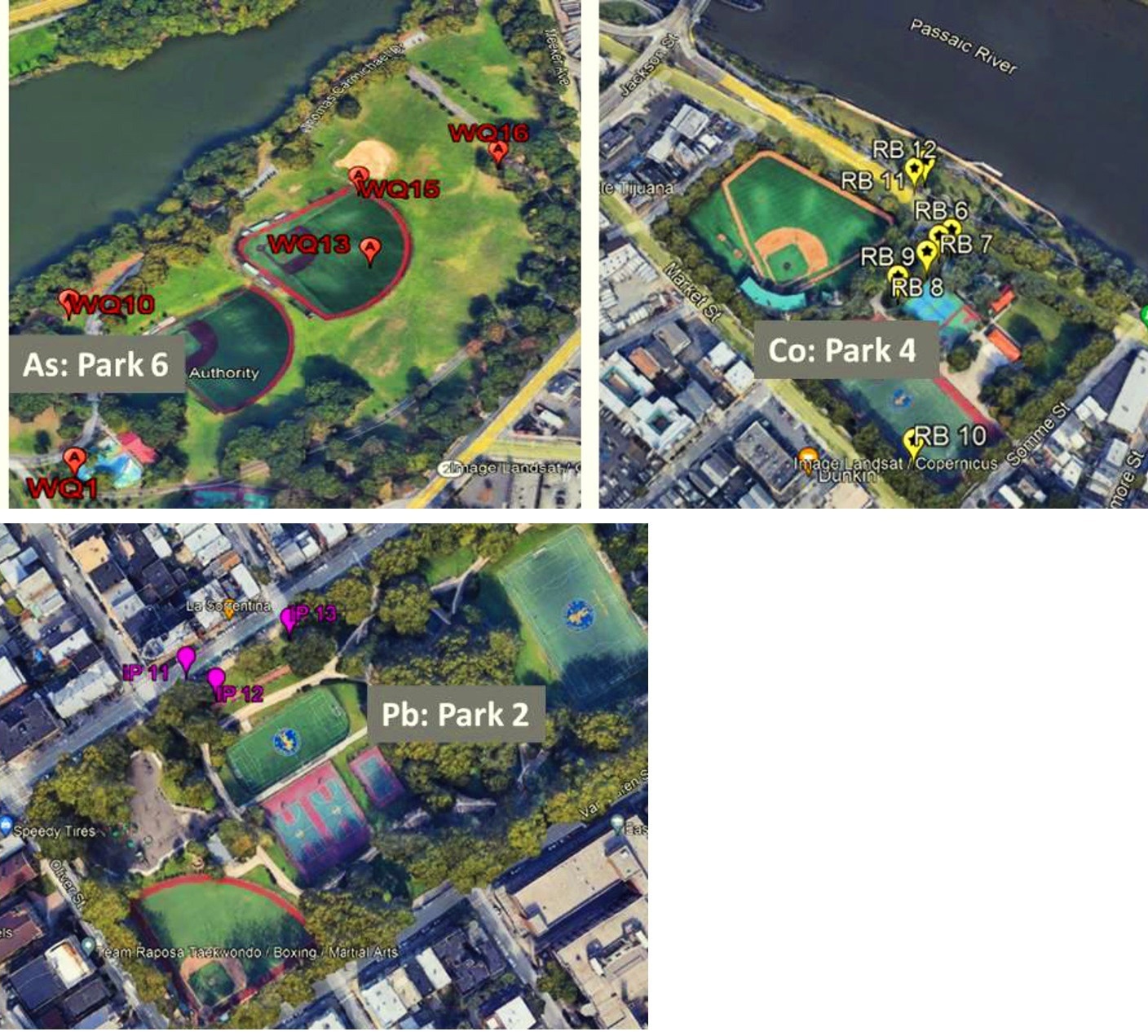
Figure 3. Spatial distribution of select metals. Each park shown had the highest number of samples with elevated concentrations of the indicated metal relative to the other surveyed parks. Image Credit: SciAps, Inc.
What do these findings suggest about the origins and potential consequences of the metals detected?
SY: The As and Co in park soils may be contributed by atmospheric deposition from sources such as fossil fuel combustion and waste incineration. However, the prevalence of these two metals suggests direct addition, for example, As in pesticides and Co in fertilizers, particularly in manicured areas of the parks.
The location of elevated Pb suggests deposition from vehicular traffic and transportation activity. The metals As, Co, and Pb were detected in concentrations above NJDEP limits in high-contact recreational soils in Newark, N.J. parks.
This is of concern, particularly in locations that may expose vulnerable populations to these contaminants. For As, which is detected most frequently, pesticides may be a source of the metal(loid). However, a follow-up XRF survey of contaminated areas and a more in-depth evaluation of potential metal sources are to be conducted as part of future work.
AR: Within future work, soils and sediments with the highest metal concentrations will also be subject to in-lab extractions and further analysis. The extraction data will complement field XRF analysis by determining the speciation and potential mobility of metals in the most contaminated soils.
What’s the next step for these findings?
SY: In the next phase of the study, we will conduct a complete analysis of the soils to get an assessment of the potential mobility of the contaminants. We also plan to study the potential of the contaminated soils to infiltrate the air, which could potentially affect ingestion pathways if the contaminants are bound to smaller particles.
Together with the undergraduate student that I mentor, Kathleen Martin, I am also currently mapping the 110 samples collected to show the concentration and potency from one area to another. We are going to use the GIS heat map signature to see if these contaminants are around playgrounds only or if they are around soccer fields as well.
Using the GIS will allow us to track the contaminants this year and compare them to the next year. I will then compare the parks to each other to see if this is a continuous thing throughout the parks.
AR: Sharing these findings with the public is one benefit of the analysis, but the easy-to-adopt instrumentation is leading to more. We will use the newly purchased analyzers on smaller-scale undergraduate research projects that connect to the whole project. We can engage a broader range of students in this type of public or community-based research. Summer programs can also be set up for undergraduates, and using the XRF is going to be a lifesaver in terms of doing analysis in the field.
I have already added XRF analysis to soil modules in environmental and geochemistry courses for those students who are not necessarily participating in research but will benefit from the immediate analysis of samples in the classroom. We are going to be developing and modifying course modules to include the XRF wherever we can.
SY: Atmospheric deposition or direct application may be sources of detected metals. Our future work will determine the speciation and potential mobility of the elevated metals. We will also subject soils and sediments with the highest metal concentrations to in-lab extractions and further analysis.
About Dr. Ashaki Rouff and Suah Yekeh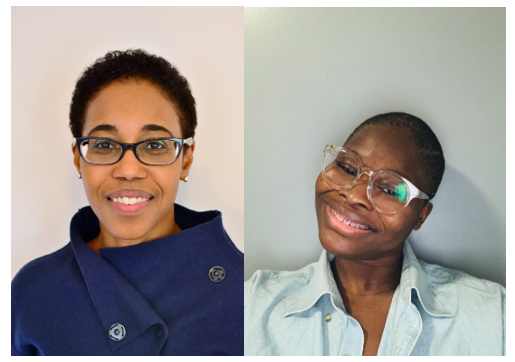
Dr. Ashaki Rouff is an Associate Professor in the Department of Earth & Environmental Sciences at Rutgers University, Newark NJ. She is an Environmental Geochemist studying soil and water contaminants in natural and human-impacted systems with the goal of environmental preservation and sustainability. Current projects include phosphorus recovery from wastewater for sustainable use of nutrient resources; evaluation of sustainably-sourced sorbents for gas emission sequestration; and determination of heavy metal occurrence in the urban soils of Newark, New Jersey. Dr. Rouff holds a BA in Geology from Middlebury College, Vermont, and a PhD in Geosciences from Stony Brook University, New York. She completed Postdoctoral appointments at the University of Illinois, Chicago, IL and the Paul Scherrer Institute, Switzerland. She is the recipient of a 2019 Fulbright Global Scholar Award.
Suah Yekeh is a second year PhD student in the Department of Earth & Environmental Sciences at Rutgers University, Newark NJ. She is currently studying Environmental Science with a concentration in soil and water contaminants. Suah has a B.S in Geology from Rutgers University. She has completed a CLOSES-GAP Fellowship at the University of New Hampshire, and a Geomicrobiology fellowship and Rutgers University. She is the recipient of the LSAMP Bridge to the Doctorate fellowship and the Urban Student Scholarship.
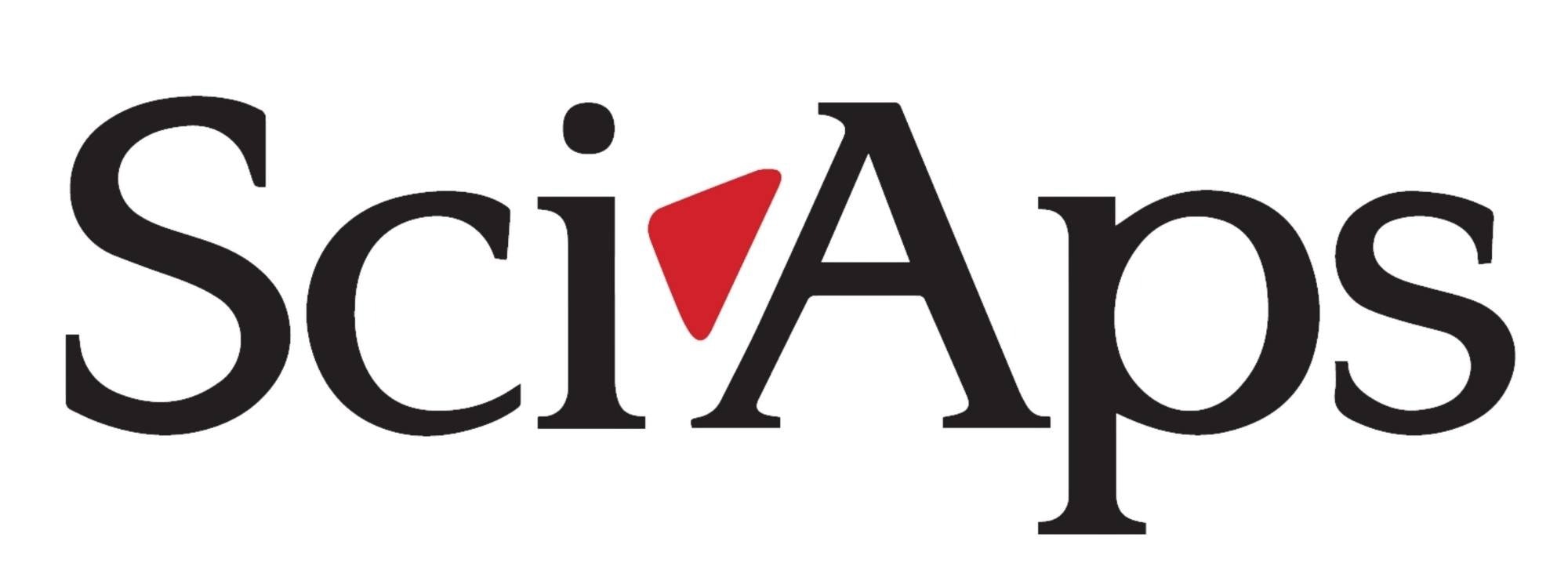
This information has been sourced, reviewed and adapted from materials provided by SciAps, Inc.
For more information on this source, please visit SciAps, Inc.
Disclaimer: The views expressed here are those of the interviewee and do not necessarily represent the views of AZoM.com Limited (T/A) AZoNetwork, the owner and operator of this website. This disclaimer forms part of the Terms and Conditions of use of this website.